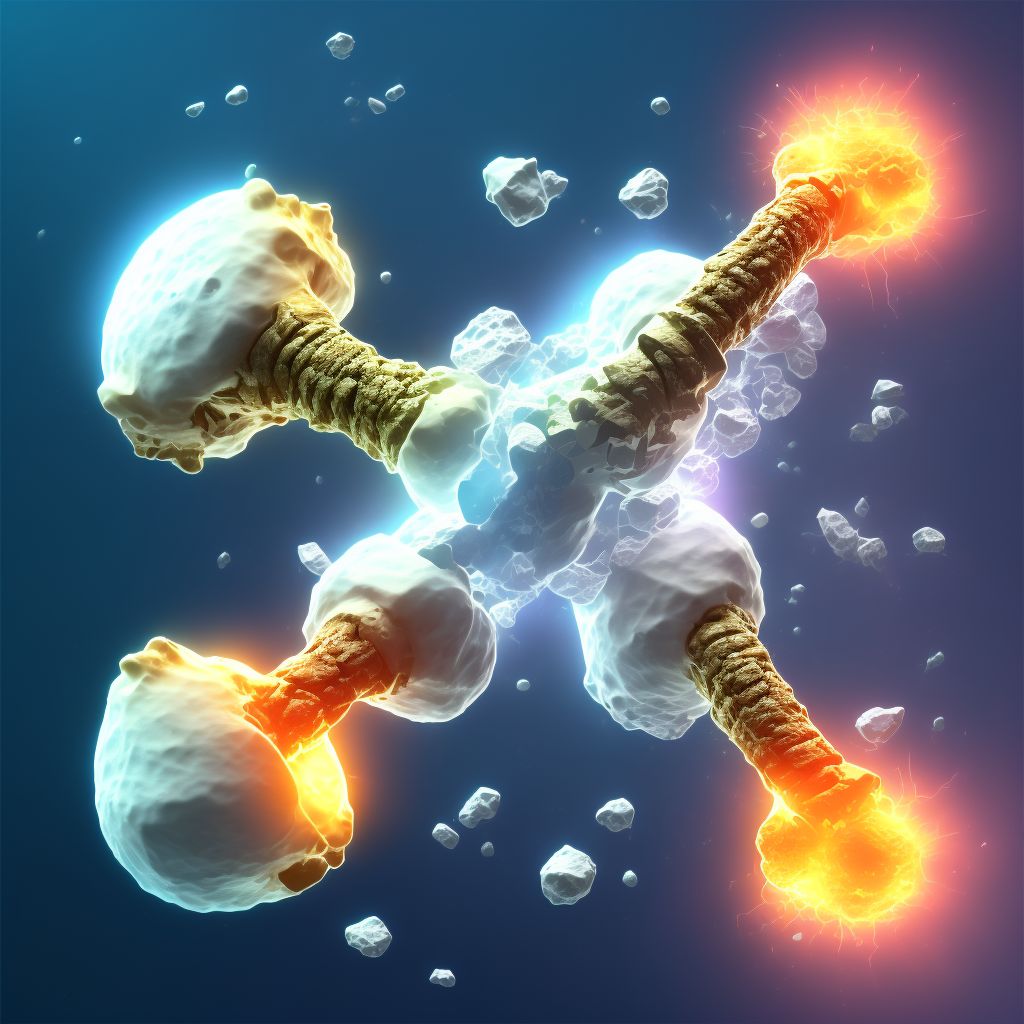
Displaced segmental fracture of shaft of unspecified tibia, subsequent encounter for open fracture type IIIA, IIIB, or IIIC with routine healing Save
ICD-10 code: S82.263F
Disease category: S82.263: Displaced segmental fracture of shaft of unspecified tibia
Displaced Segmental Fracture of Shaft of Unspecified Tibia: Understanding the Healing Process
When it comes to bone fractures, one type that can occur is a displaced segmental fracture of the shaft of the unspecified tibia. This specific type of fracture usually requires medical attention and may result in an open fracture type IIIA, IIIB, or IIIC. In this article, we will explore the subsequent encounter for this type of fracture, focusing on the routine healing process.
After an initial diagnosis and treatment of an open fracture type IIIA, IIIB, or IIIC, the subsequent encounter refers to the follow-up appointments or visits to monitor the healing progress. During these encounters, healthcare professionals assess the patient's condition and ensure that the fracture is healing properly.
Throughout the routine healing process, various factors contribute to the successful recovery of a displaced segmental fracture. Adequate immobilization, typically achieved through casting or the use of external fixators, plays a crucial role in stabilizing the fractured bone segments. This immobilization allows the bone to align correctly and promotes healing.
- Rest and Protection:
- Physical Therapy:
- Healthy Lifestyle:
Resting the injured leg and protecting it from further trauma is vital for the healing process. Patients are advised to avoid putting weight on the affected leg and use crutches or other assistive devices to aid mobility.
Once the initial healing phase is complete, physical therapy may be recommended to restore strength, flexibility, and range of motion in the affected leg. Physical therapists work closely with patients to develop tailored exercise plans that gradually increase in intensity as the healing progresses.
A nutritious diet rich in vitamins and minerals, particularly calcium and vitamin D, is essential for bone health. Quitting smoking and limiting alcohol consumption can also contribute to improved healing rates.
During subsequent encounters, healthcare professionals monitor the patient's progress by evaluating X-rays and conducting physical examinations. They ensure that the fracture is healing well, without any signs of infection or complications.
In conclusion, a displaced segmental fracture of the shaft of an unspecified tibia, resulting in an open fracture type IIIA, IIIB, or IIIC, requires careful management and routine healing. Through immobilization, rest, physical therapy, and maintaining a healthy lifestyle, patients can expect a successful recovery. Regular follow-up visits with healthcare professionals allow for close monitoring and adjustments to the treatment plan, ensuring optimal healing outcomes.
Treatment of Displaced segmental fracture of shaft of unspecified tibia, subsequent encounter for open fracture type IIIA, IIIB, or IIIC with routine healing:
Treatment Options for Displaced Segmental Fracture of the Tibia Shaft
A displaced segmental fracture of the shaft of the tibia can be a serious injury, requiring prompt and appropriate treatment. In subsequent encounters, when the fracture has healed, it is important to follow specific treatment options to ensure routine healing and a successful recovery. Here are some treatment op...
To see full information about treatment please Sign up or Log in